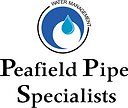Hydrostatic pressure testing is a critical process in various industries, ensuring the safety and reliability of equipment and pipelines that carry fluids under pressure. It involves filling the system with a liquid, typically water, and subjecting it to pressures higher than its operating limits. This rigorous examination helps detect weaknesses and potential failures that could lead to catastrophic accidents. However, with safety comes a cost, and estimating the expenses associated with hydrostatic pressure testing is a crucial aspect of project planning. In this article, we delve into the intricacies of hydrostatic pressure testing cost estimation, shedding light on the factors that influence it and strategies to optimize expenditure.
Understanding Hydrostatic Pressure Testing
Before diving into cost estimation, let’s establish a clear understanding of hydrostatic pressure testing. This method involves filling the equipment or pipeline with a test fluid, such as water, and pressurizing it to a predetermined level. The system is then monitored for any signs of leakage, expansion, or deformation. The test pressure is typically higher than the expected operating pressure, ensuring that the equipment can safely withstand unexpected spikes.
Factors Influencing Hydrostatic Pressure Testing Costs
Equipment Size and Complexity:
The size and complexity of the system under test play a significant role in cost estimation. Larger and more intricate equipment or pipelines require more time and resources to perform the test properly. This involves not only higher material costs for the testing medium but also additional manpower and equipment to manage and monitor the process.
Test Pressure Requirements:
The required test pressure is a crucial factor. Higher test pressures demand stronger and more robust equipment, which can be more expensive to procure and maintain. Additionally, achieving and maintaining high pressures may require specialized pumps and control systems.
Safety Regulations and Standards:
Compliance with safety regulations and industry standards is non-negotiable. These guidelines dictate specific testing parameters and safety measures, which can add to the overall cost. Failing to meet these requirements can result in costly retesting and potential legal consequences.
Test Duration:
The duration of the hydrostatic pressure test impacts costs directly. Longer test periods mean more labor hours and increased material consumption. Efficient planning and scheduling can help minimize expenses in this regard.
Location and Accessibility:
The geographic location of the testing site and its accessibility can significantly affect costs. Remote or hard-to-reach locations may require additional logistics and transportation expenses. Ensuring easy access can help streamline the testing process and reduce costs.
Testing Medium:
The choice of testing medium, typically water, can affect costs. Some projects may require the use of specialized test fluids, which can be more expensive. Water is the most commonly used medium due to its availability and affordability.
Strategies to Optimize Hydrostatic Pressure Testing Costs
Proper Planning and Scheduling:
Effective project planning and scheduling are essential to optimize hydrostatic pressure testing costs. Allocating adequate time for preparation, testing, and evaluation helps prevent rushed and costly mistakes.
Equipment Maintenance:
Regular maintenance of testing equipment is crucial. Well-maintained equipment is less likely to fail during testing, reducing the risk of costly delays and retests.
Efficient Resource Allocation:
Careful allocation of resources, including manpower and equipment, can help optimize costs. Ensure that you have the right personnel with the necessary expertise and equipment for the job.
Compliance with Regulations:
Always adhere to safety regulations and industry standards. Non-compliance can lead to costly consequences, including project delays and fines.
Streamlined Logistics:
Choose testing locations that are easily accessible and have minimal logistical challenges. This can help reduce transportation and setup costs.
Use of Technology:
Embrace technology to enhance testing efficiency. Automated data acquisition and monitoring systems can reduce labor costs and improve data accuracy.
Conclusion
Hydrostatic pressure testing is a critical process for ensuring the safety and reliability of equipment and pipelines in various industries. Estimating the costs associated with this testing method is essential for effective project planning. Factors such as equipment size, test pressure requirements, safety regulations, test duration, location, and testing medium all influence the overall cost. To optimize these costs, proper planning, equipment maintenance, efficient resource allocation, compliance with regulations, streamlined logistics, and the use of technology are essential strategies. By carefully considering these factors and implementing cost-effective measures, organizations can ensure the safety of their systems without breaking the bank.
